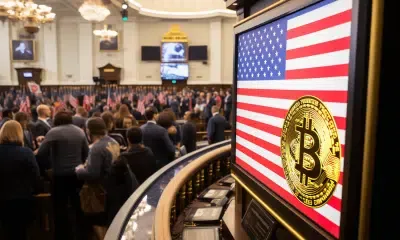
Tether (USDT): The Digital Dollar Changing Crypto
Tether (USDT) stands as a giant in crypto, acting like a digital twin to the U.S. dollar. It’s built to offer a steady link between the often chaotic crypto markets and regular money. The big idea is that one USDT should always be worth one U.S. dollar, giving traders a bit of calm in a famously unpredictable financial scene. This simple concept has made USDT fundamental to crypto trading and vital for keeping markets moving.
How a Stablecoin Leader Was Born
The concept for Tether started brewing in the early 2010s, as bright minds figured out how to put real-world assets onto the Bitcoin network. “Realcoin,” which came before Tether, first appeared in July 2014, thanks to Brock Pierce, Reeve Collins, and Craig Sellars. They wanted to use Bitcoin’s own system for swapping property and contracts directly.
Come November 2014, CEO Reeve Collins revealed the new name: “Tether.” The company making this stablecoin, Tether Limited Inc., is owned by iFinex. That’s a firm registered in the British Virgin Islands which also runs the Bitfinex crypto exchange. Paolo Ardoino is now Tether’s CEO, and Giancarlo Devasini serves as Chairman. The very first USDT tokens showed up on October 6, 2014. They used the Bitcoin blockchain through something called the Omni Layer protocol, a system that allowed for creating assets based on smart contracts. Since then, Tether has spread its wings aggressively, now operating on many blockchains like Ethereum, Tron, Solana, and Algorand.
Solving Crypto’s Ups and Downs
Tether came about from a desire to turn regular money digital, aiming to shake up the old financial ways. Its main job? To deal with the wild price swings that give most cryptocurrencies a bad name.
Here’s what it tries to do:
- Keep Prices Steady: By tying USDT to the U.S. dollar, it offers a digital asset that doesn’t jump around in value much. This lets traders protect themselves from market chaos without having to leave the crypto world.
- Make Trading Easier: USDT works like a common currency on different exchanges. This makes moving money between platforms and trading different crypto pairs simpler, often cutting down on costs and waiting times.
- Connect Fiat and Crypto: It gives people a straightforward way to turn their traditional money into a digital form they can use on blockchains.
- Open Up Blockchain Deals: Tether lets folks make deals on the blockchain using values they understand from traditional money, which simplifies sending money across borders globally.
- A Safe Spot in Stormy Markets: When the market gets really wild, investors often move their money into Tether to protect it from crashes in other digital coins.
- Reduce Slippage: Because USDT’s value is stable, it helps prevent you from losing money while your transaction is being processed.
How It Works: Across Many Chains, Aiming for Stability
Tether first appeared on Bitcoin’s Omni Layer, but its smart move to other chains like Ethereum (as ERC-20 tokens), Tron (TRC-20), and Solana really helped it grow. This multi-chain approach lets people pick the network that best suits their needs for transaction speed, fees, or compatibility with decentralized apps.
Tether Limited is in charge of making and destroying USDT. New USDT gets created when people or companies (usually exchanges or big traders) put regular money into Tether’s bank. These new tokens then get “issued” out. On the flip side, when someone cashes in USDT for regular money, those tokens are “burned” or taken out of use, making sure the supply is always backed by reserves.
Keeping that 1 USDT = $1 US dollar link strong depends on two main things:
- Money in the Bank (Reserves): Tether claims every USDT is fully backed by its reserves, which include cash, things easily turned into cash, and other assets.
- Smart Traders (Arbitrage): If USDT’s price on exchanges moves away from $1, quick-thinking traders step in. If USDT is worth more than $1, they can buy it from Tether for $1 and sell it on an exchange for a profit, which adds more USDT to the market and pushes the price down. If USDT is worth less than $1, they buy it cheap on exchanges and swap it with Tether for $1, which pulls the exchange price back up.
What’s in Tether’s Wallet? A Peek at the Reserves
Tether’s financial reports give us a glimpse of what’s backing USDT. According to its Q1 2025 Consolidated Reserves Report (CRR), checked by BDO, Tether had about $149.3 billion in total assets. Its total debts were around $143.7 billion (mostly the digital tokens it had issued), meaning it had about $5.6 billion in extra reserves.
As of March 31, 2025, here’s how its assets broke down:
- Cash, Cash-like Assets, and Short-Term Deposits: This chunk, making up over 90% of reserves, was mostly U.S. Treasury Bills – about 66.05% ($98.59 billion) of everything. In total, Tether’s exposure to U.S. Treasuries, counting indirect ways like money market funds and reverse repos, was close to a record $120 billion.
- Secured Loans: These were about 5.91% ($8.83 billion), but who they lent to isn’t very clear.
- Bitcoin: Tether said it held Bitcoin worth over $7.66 billion.
- Precious Metals (Gold): It had physical gold reserves valued at $6.66 billion.
- Other Bets: Strategic money put into AI, green energy, and peer-to-peer communication, worth over $2 billion, are kept separate from the stablecoin reserves.
Checks and Transparency: The Never-Ending Story
Tether releases quarterly statements about its reserves, currently handled by BDO Italia. These reports confirm that, on the day they check, Tether’s assets are more than its debts. But there’s a big difference to note: these are attestations, not complete financial audits. An attestation just checks balances at one specific moment based on what the company shows them. A full audit digs much deeper into financial records and how the company controls its money over time.
The fact that a major accounting firm hasn’t done a full audit is still a big point of criticism, even though Tether says it’s a “top priority.”
A Past Full of Questions and Legal Fights
Tether, along with Bitfinex, the exchange it’s linked to, has been through quite a few scandals and court cases:
- New York Attorney General (NYAG) Deal (2021): iFinex, the parent company of Tether and Bitfinex, paid $18.5 million to settle claims that it lied about how USDT was backed and covered up an $850 million loss. The deal also forced them to release quarterly reserve reports.
- CFTC Fines (2021): The U.S. Commodity Futures Trading Commission (CFTC) fined Tether $41 million for saying misleading things about its reserves. They found USDT wasn’t always fully backed by U.S. dollars. Bitfinex got hit with a $1.5 million fine too.
- Bitfinex Hacks: A major hack in 2016 saw about 120,000 BTC stolen from Bitfinex. This sparked worries about security and how closely the two companies were connected.
- Accusations of Rigging the Market: Some university research, especially by Griffin and Shams, hinted that new Tether was printed to pump up Bitcoin prices, particularly during the 2017 boom. These accusations are debated, though, as other studies haven’t found clear proof of price manipulation.
Market Power and Why It Matters to Everyone
By May 2025, USDT’s total value shot past $150 billion, making it the third-biggest cryptocurrency around. Its daily trading volume usually sits somewhere between $65 billion and $127 billion, often more than Bitcoin itself. This dominance, with USDT controlling nearly 70% of the stablecoin market, shows just how crucial it is for keeping money flowing in crypto. Some people think Tether is involved in as much as 78% of all crypto trades.
But being so big also means it’s a risk for the whole system. If anything shaky happens with Tether or people lose faith in it, it could send shockwaves through the entire cryptocurrency market.
More Than Just Trading: Other Uses
While it’s key for trading, USDT is also useful for:
- Holding Value: Especially where inflation is high or economies are shaky, people use USDT to protect their savings.
- DeFi Fuel: USDT is a big part of decentralized finance, used for lending, borrowing, and in liquidity pools.
- Sending Money Abroad: It offers a quicker and cheaper way to make international payments and send money home compared to old-school bank transfers.
The Regulatory Maze
Rules for stablecoins are getting stricter worldwide. The European Union’s Markets in Crypto-Assets (MiCA) law, which kicked in for stablecoins in mid-2024, demands tough standards for reserves, openness, and how they’re run. This has made some exchanges like OKX and Kraken think about dropping or limiting USDT for European customers because of worries about meeting the rules. The U.S. is also working on nationwide rules for stablecoins, focusing on solid reserve backing and rules against money laundering and terrorism financing, which might force Tether to change how its reserves are currently set up.
Rivals and the Dawn of Digital Government Money
Tether isn’t alone; it competes with other stablecoins like USDC, which often highlights its rule-following and openness. On top of that, 134 countries (covering 98% of the world’s economy) are looking into creating their own Central Bank Digital Currencies (CBDCs), which could be a challenge in the long run. CBDCs, being direct debts of central banks, would be inherently safe and could compete with stablecoins for payments. Still, stablecoins might keep an edge in DeFi and for new ideas in cross-border payments.
Security and Who’s in Charge
USDT’s smart contracts, even though they’ve been checked, aren’t open for everyone to see, which means less public checking. Tether has had security scares, like a $31 million theft from its treasury in 2017. For users, staying safe means using good habits like secure wallet management and watching out for scams. iFinex centrally controls Tether, with its leaders making the big calls about reserves and which blockchains to support.
What’s Next?
Tether’s story is a mixed bag of new ideas, market power, and constant questions. There’s no denying its importance in greasing the wheels of crypto and connecting it to traditional finance. But what happens next will largely depend on whether it can handle new regulations, be more open about its reserves, and keep people’s trust as competition grows and government digital currencies emerge. This digital dollar giant is on a balancing act, and its steadiness and acceptance will massively shape how the wider crypto world grows up.




